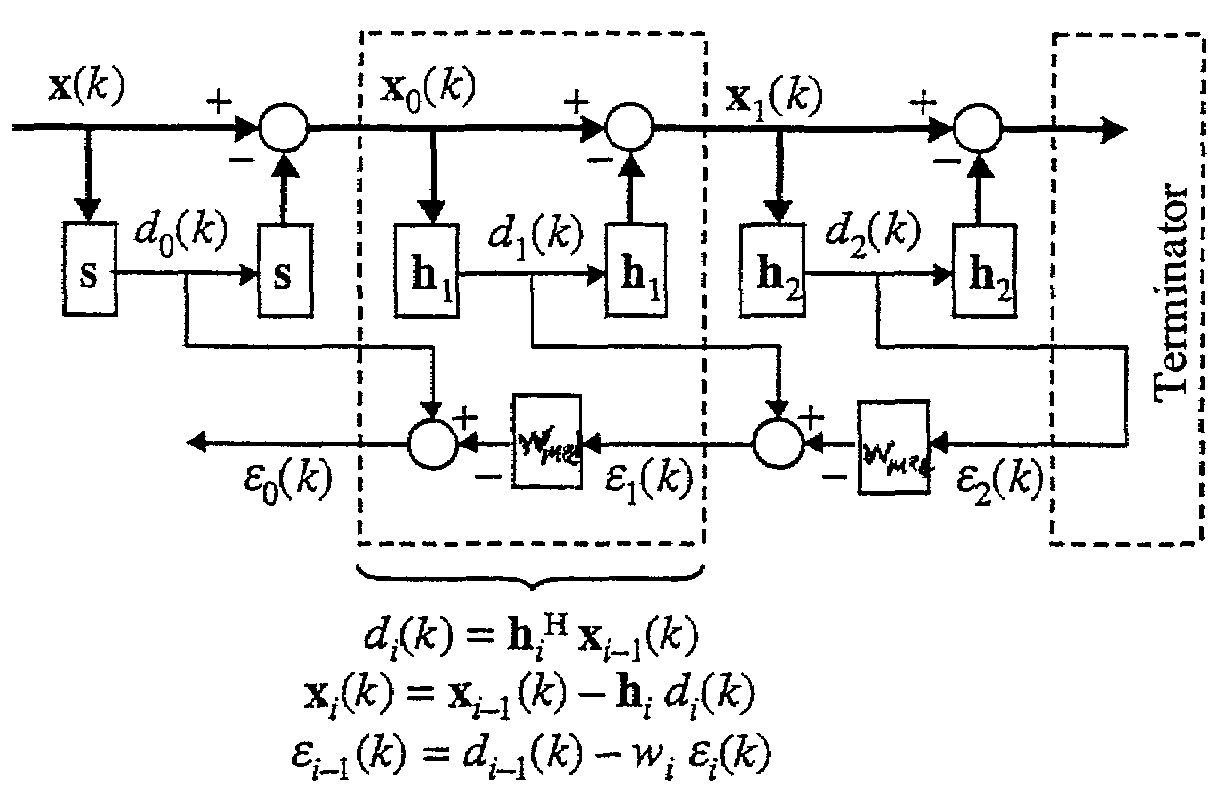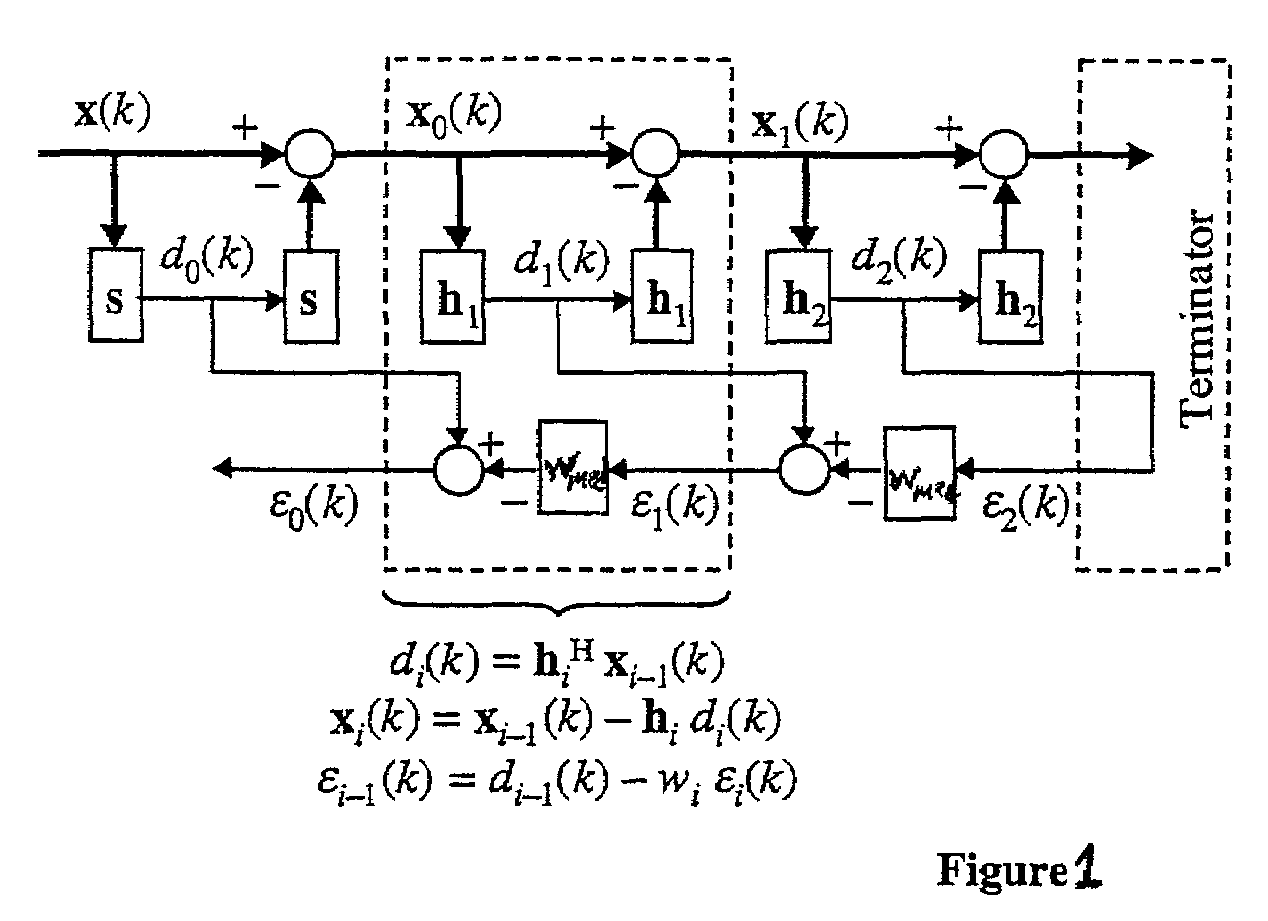Multistage median cascaded canceller
a cascade canceller and multi-stage technology, applied in the field of adaptive signal processing system, can solve the problems of requiring an unworkable large number of weight training data samples, affecting the convergence of the system, and affecting the detection and estimation of desired signals, so as to reduce the rank processing, reduce the loss of noise cancellation, and reduce the effect of rank
- Summary
- Abstract
- Description
- Claims
- Application Information
AI Technical Summary
Benefits of technology
Problems solved by technology
Method used
Image
Examples
Embodiment Construction
[0034]Referring now to FIGS. 1–3, a Multistage Median Cascaded Filter (MMCC) 10 receives input data x(k). The x(k) data stream is applied to a steering vector s 12, where processing begins with non-adaptive calculations. First, the data vectors are projected onto the steering vector to form an initial estimate of the desired signal:
d0(k)=sHx(k). (1)
For example, d0(k) may be the output of a conventional beamformer or a matched filter. In general, d0(k) contains interference that comes in through the sidelobes of s. To prepare for a statistical analysis that will identify and subtract this interference, the rest of the data may be isolated by writing
x0(k)=Bx(k), (2)
where B is a “blocking matrix”14 that finds the projection of the data x(k) orthogonal to s, i.e., the projection onto the nullspace of s.
[0035]The projection operation in (2) is uniquely defined. However, the projection can be accounted for in at least two ways. In earlier approaches, the blocking matrix was rectangular ...
PUM
 Login to View More
Login to View More Abstract
Description
Claims
Application Information
 Login to View More
Login to View More - R&D
- Intellectual Property
- Life Sciences
- Materials
- Tech Scout
- Unparalleled Data Quality
- Higher Quality Content
- 60% Fewer Hallucinations
Browse by: Latest US Patents, China's latest patents, Technical Efficacy Thesaurus, Application Domain, Technology Topic, Popular Technical Reports.
© 2025 PatSnap. All rights reserved.Legal|Privacy policy|Modern Slavery Act Transparency Statement|Sitemap|About US| Contact US: help@patsnap.com



